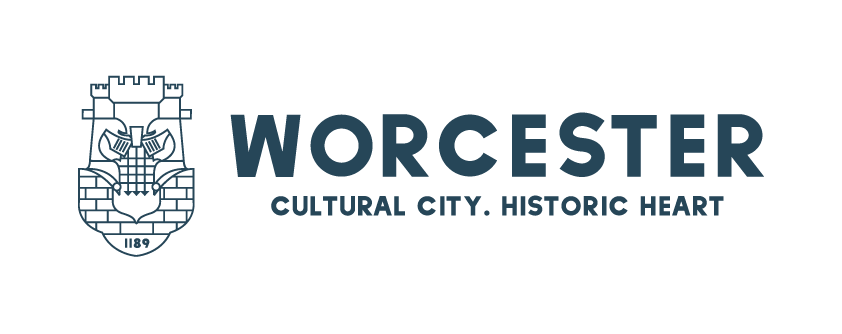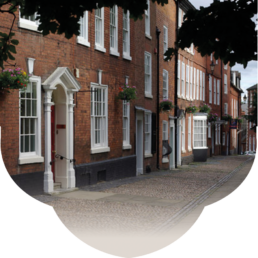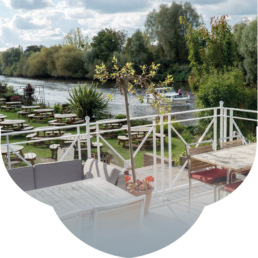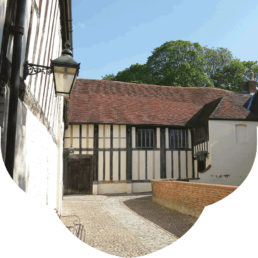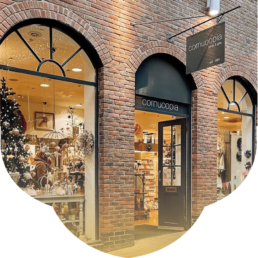A late medieval timber-framed house situated on Worcester’s historic Friar Street. The house, once destined for demolition, was bought back to life in the latter half of the 20th century by siblings Elsie and Matley Moore.
Worcester Cathedral is one of England's loveliest cathedrals. It stands majestically overlooking the River Severn, close to the city centre.
Musical Heritage
Be inspired by the scenery which would have surrounded Sir Edward Elgar as he composed some of his most famous pieces during his time in Worcester. Elgar’s Birthplace, The Firs, is located a short drive from the city centre and there are various plaques throughout the city to acknowledge the large part it played in Elgar’s life.
Worcester is also the shared home of the oldest non-competitive music festival in the world. The Three Choirs Festival is still hosted in the city every three years.
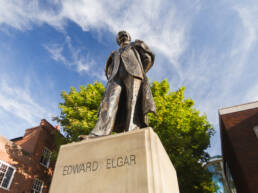
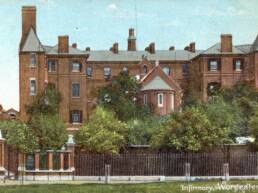
Medical Heritage
Worcester has an excellent medical pedigree as the birthplace of Dr John Wall, one of the founders of Worcester Royal Infirmary which was one of the first voluntary hospitals in the UK.
The British Medical Association (BMA) was founded by Sir Charles Hastings in the Board Room of the old Worcester Royal Infirmary building in Castle Street in 1832. This is now the site of a dedicated museum as well as the University of Worcester City Campus.


Home of the Sauce.
The name Worcestershire is known the world over thanks to the sauce which is still made here to this day. The Lea and Perrins factory on Midland Road is not currently open to the public but the smells of the sauce creation drift across the city.
The Civil War City.
Worcester played a large part in the English Civil War and you can still visit the resting place of Charles II used during his battle with Cromwell’s New Model Army (King Charles Pub on New Street). Fort Royal Park is of critical historical significance to the city, as the site of the 1651 Battle of Worcester, the final battle of the war. It is well worth the short climb to the top of this hill for the spectacular views across the city.
Worcester witnessed the opening and closing battles of the Civil War, ending in a final clash between Royalists and Parliamentarians in the Battle of Worcester in 1651. There are many signs of this battle throughout the city and history enthusiasts will enjoy immersing themselves in the Civil War story as they explore these sites…
The Commandery, Civil War HQ
The Commandery served as battle headquarters for the Royalist army and their defeat is a defining moment in the evolution of modern day democracy. The museum’s interactive experience takes you back 350 years into a murky, conflicted 17th century Worcester of fiery debates, gunpowder and dank city streets.
Master tactical techniques with battlefield strategy and uncover the stories of families torn apart by war. Meet countless characters on the journey, coming face to face with the formidable Oliver Cromwell and learn about the visit of future US Presidents John Adams and Thomas Jefferson to Worcester in 1786.
The Commandery is located in Worcester City centre on the main A44 just three minutes’ walk from the Cathedral and the High Street. The nearest car parks are on King Street and Commandery Road.


Worcester Cathedral.
Worcester Cathedral has been a place of Christian worship and prayer for fourteen centuries. Described as possibly the most interesting of all England’s cathedrals, especially architecturally, Worcester Cathedral was founded in 680.
The Cathedral’s attractions include King John’s Tomb, Prince Arthur’s Chantry, the early 12th Century Chapter House, St Wulfstan’s Crypt, medieval cloisters, magnificent Victorian stained glass, and spectacular views from the top of the Cathedral tower.
Worcester has a unique and varied history, with the magnificent Worcester Cathedral witness to many conflicts, as well as an assortment of ancient, cultural, industrial events. The city is said by some to be the ‘birthplace of democracy’, thanks in part to its function in the creation of the Magna Carta and its roles in the Civil War. Also, Edward Winslow – one of the founding fathers and inspiration for the American constitution – was educated here at the Cathedral.
Explore the story of “Bad” King John who is buried in Worcester Cathedral. He is most famous as the King who was forced by Barons to agree to the Magna Carta – one of the most important documents in history. Without this, our legal system would not be the same as it is today because for the first time, the rule of law was given precedence over the rule of the monarch.
Charles watched the progress of the battle and planned tactics with his commanders from the Cathedral tower which offers panoramic views of the battle sites and is open for tours. The Cathedral is also the final resting place of the Duke of Hamilton who died of wounds sustained in the battle.
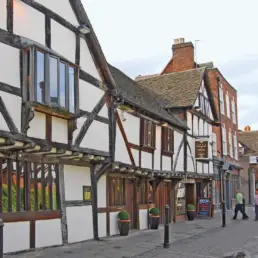
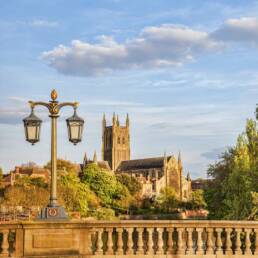
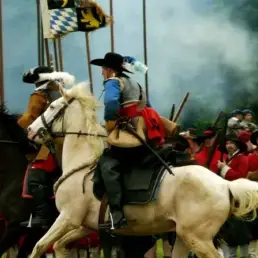
The Faithful Story
Relive Worcester’s past during the English civil wars through tales of the struggles between king and Parliament, played out on the very streets you are walking along! Discover Prince Rupert’s plans for the crumbling walls, look down on the city from Fort Royal & hear of the vandalism of the Parliamentarian forces in the Cathedral.
The Battlefield Story
This is a half-day, five mile tour of the fields where the first (1642) and final (1651) battles of the English Civil War took place. Follow the route of the Royalist forces, cross the meadows alongside the rivers Severn and Teme, stand where the famous bridge of boats may have stood and walk across the very bridge at Powick, that once rang out with the sound of cavalry horses as they heralded the start of one of the most important periods of our history.
These tours are led by Discover History and bookable upon request by contacting 07949 222137 or discoverhistory@aol.com
Civil War Story
Your guide will take you to Fort Royal Hill where you can view the city as King Charles II did. Visit the Royalist headquarters, and hear the dramatic tales of the last days of the bloody Civil War. The battle of Worcester, where King Charles II finally lost his Kingdom and escaped Cromwell’s soldiers – by the skin of his teeth. This tour is led by Worcester Walks, book your place here.
